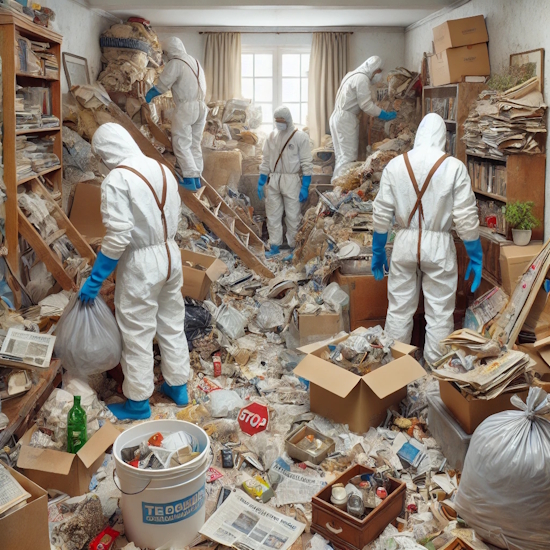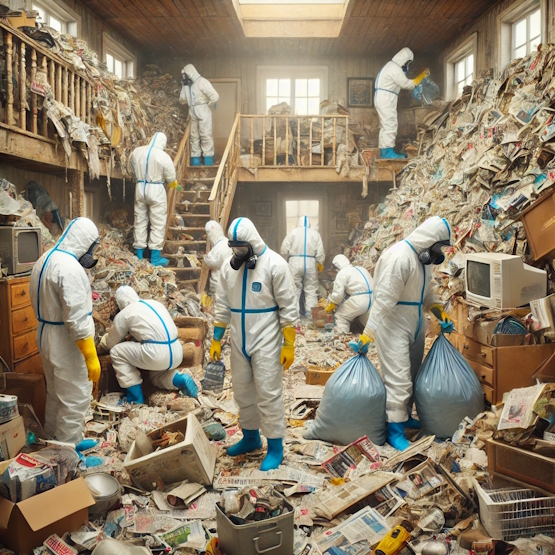Cleaning for Hoarders: A Guide to Compassionate and Effective Organizing
Hoarding is a complex condition that involves the accumulation of excessive items to the point where it interferes with daily life. It’s not simply about clutter; hoarding can often lead to unsafe living conditions, social isolation, and emotional distress. For those tasked with helping a hoarder clean, whether it’s a family member, a professional organizer, or a cleaning service, understanding the psychological and practical aspects of hoarding is crucial.
Understanding Hoarding Disorder
Hoarding disorder (HD) is recognized by the American Psychiatric Association as a mental health condition. It typically involves:
- Compulsive collecting of items, often items that appear to have little or no value to others.
- Severe difficulty discarding things, even when they’re damaged, expired, or no longer useful.
- Emotional distress tied to the idea of getting rid of possessions. This can lead to shame, guilt, or anxiety.
- Cluttered living spaces that disrupt normal functioning or make the environment hazardous.
It’s important to approach hoarding with empathy. People with this condition often don’t see the clutter as a problem, and cleaning may feel like an invasion of their personal space and identity.
Steps for Cleaning a Hoarder’s Home
Cleaning a hoarder’s home is a delicate process that requires patience, respect, and often professional help. Here are the key steps involved in addressing the mess:
1. Assess the Situation
Before jumping into the cleaning process, it’s essential to evaluate the scope of the clutter. Some hoarding situations are extreme, while others may involve only a few rooms. Begin by identifying the most problematic areas (such as hallways, bathrooms, or kitchens) and prioritize them. Be sure to assess the safety risks, including fire hazards or blocked exits.
2. Set Realistic Expectations and Goals
Cleaning a hoarded home will not be a one-time, quick fix. It’s important to set realistic goals and expectations, acknowledging that this will be a gradual process. Plan for several days or even weeks to complete the task, depending on the size of the space.
3. Approach with Compassion
It’s crucial to communicate with the hoarder about your plans and listen to their concerns. Hoarding can stem from deep emotional issues, so be understanding and non-judgmental. It’s important to involve them in the process as much as possible, allowing them to make decisions about what they want to keep.
4. Organize and Sort Items
Sorting through the items can be overwhelming, but it’s a necessary step. Create categories for the items—things to keep, donate, sell, and throw away. If the hoarder is reluctant to part with things, offer support and encouragement, but also allow breaks to reduce emotional fatigue.
5. Clean and Disinfect
Once sorting is done, start the cleaning process. This may involve:
- Dusting, vacuuming, and sweeping to remove accumulated dirt and debris.
- Disinfecting surfaces to ensure sanitary conditions.
- Addressing potential mold or mildew—this might require professional cleaning services, especially in cases where the hoarding involved organic materials like food.
6. Consider Safety and Health Hazards
Hoarded homes often have hidden health and safety hazards, such as rodent droppings, mold, or blocked fire exits. If there are significant issues like sewage backup or pest infestations, it’s important to call in specialists who can address these problems professionally.
7. Seek Professional Help
In some cases, cleaning may require the help of professional organizers, therapists, or cleaning services. Professional organizers who specialize in hoarding can guide the process with a structured approach. Therapists specializing in hoarding disorder can help address the emotional and psychological aspects of the behavior.
8. Ongoing Support and Maintenance
Once the space is cleaned, the hard work is far from over. Hoarding is an ongoing struggle for many people, and maintaining a clutter-free space requires long-term support. Establish routines for keeping the home organized, and encourage the individual to continue therapy or support groups to address the psychological components of hoarding.
Tips for Family Members and Caregivers
Cleaning a hoarded home is stressful for both the person affected by hoarding and those trying to help. Here are some additional tips for family members and caregivers:
- Avoid confrontational language: Don’t label the behavior as “disgusting” or “lazy.” Focus on the safety and health implications.
- Celebrate small victories: Cleaning may be a long process, but acknowledge and celebrate progress, even if it’s just one room or one bag of items cleared.
- Be patient and understanding: Hoarding is a long-standing condition, and recovery takes time. Don’t expect overnight results.
- Provide emotional support: Be prepared for setbacks or emotional distress during the cleaning process. Let the person know you’re there for them, regardless of their clutter.
- Encourage professional help: Therapy or support groups can provide ongoing assistance for hoarders to help them develop healthier habits.
Final Thoughts
Cleaning for hoarders is about more than just tidying up a space—it’s about addressing the underlying emotional issues that fuel the behavior. Compassionate support, patience, and professional help can make a significant difference in the life of a hoarder. The process may take time, but with the right approach, it’s possible to create a safer, healthier living environment for the person affected by hoarding.


